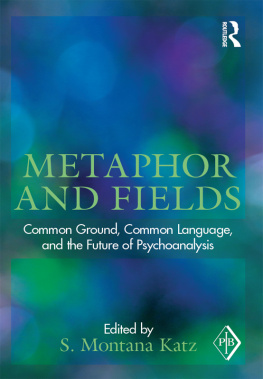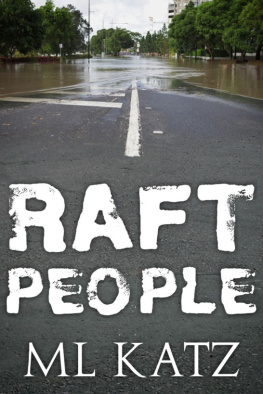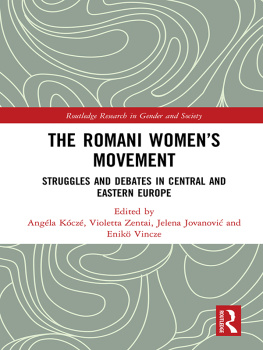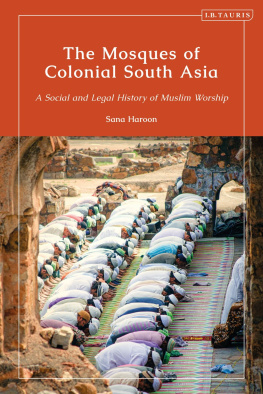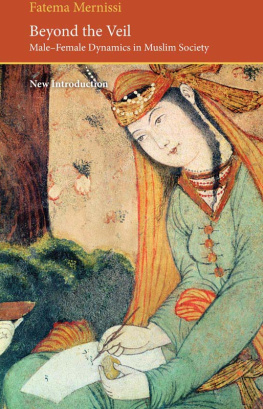WOMEN
IN THE
MOSQUE
WOMEN
IN THE
MOSQUE
A History of Legal Thought and Social Practice
MARION HOLMES KATZ
COLUMBIA UNIVERSITY PRESS
NEW YORK
Columbia University Press
Publishers Since 1893
New York Chichester, West Sussex
cup.columbia.edu
Copyright 2014 Columbia University Press
All rights reserved
E-ISBN 978-0-231-53787-2
Library of Congress Cataloging-in-Publication Data
Katz, Marion Holmes, 1967 , author.
Women in the mosque : a history of legal thought and social practice / Marion Holmes Katz.
pages cm
Includes bibliographical references and index.
ISBN 978-0-231-16266-1 (cloth : alk. paper) ISBN 978-0-231-53787-2 (electronic)
1. Women (Islamic law) 2. Mosques (Islamic law) 3. Women in Islam. I. Title.
KBP526.32.K38A34 2014
297.3'51082dc23
2013039315
A Columbia University Press E-book.
CUP would be pleased to hear about your reading experience with this e-book at .
Jacket design: Jordan Wannemacher
Jacket image: Getty
References to websites (URLs) were accurate at the time of writing. Neither the author nor Columbia University Press is responsible for URLs that may have expired or changed since the manuscript was prepared.
CONTENTS
were presented at the Islamic Studies Program and Interdisciplinary Seminar for Islamic Studies, University of Michigan, November 10, 2011; at the International Society for Islamic Legal Studies VII Conference, Islamic Law and the State, Ankara, Turkey, May 31, 2012; and at the Institute for the Transregional Study of the Contemporary Middle East, North Africa, and Central Asia, Princeton University, February 19, 2013. I thank the organizers of all of these events for the opportunity to present my work and the other participants for their feedback. I owe a debt of gratitude to Kevin Reinhart, Jonathan A. C. Brown, Intisar Rabb, and anonymous Reader Number One from Columbia University Press for their helpful comments on various stages and versions of the manuscript; this is a far better book than it would have been without their help. My particular gratitude goes out to those who read it in its far lengthier and more unruly earlier stages, which were (I hope) significantly tamed with the help of their advice. All remaining errors of fact and interpretation are, of course, purely my own. I also thank Susan Graham, Professor Nadia Lachiri, Dr. Khader Salameh of the al-Aqsa Mosque Library, Robert Dankoff, Justin Stearns, and Guy Burak for identifying sources or helping to make them available to me.
This book was a labor of love, and it depended on both the labor and the love of the members of my family. My mother, Adria Katz, is an unsung genius of editing, and this is not the first of my books to benefit from her keen eye. My father, Stanley Katz, borrowed books for me to consult on lightning visits to Princeton; he is the worlds most overqualified research assistant, and my thanks are inadequate for his help. My husband, Bradley McCormick, cheerfully put up with my precarious piles of books and irrepressible urge to share the wonders of Islamic law and history.
This book is dedicated to the memory of Amad ibn Abd al-Ghaffr al-Mlik, whose humane faith remains humbling five centuries later. May we all use our learning with his justice and integrity.
I n the mid-1830s, the Englishwoman Julia Pardoe (then resident in Istanbul) visited the mosque of Hagia Sophia with a group of more recently arrived visitors. She writes, A group of Ulemas were engaged in prayer as we entered and almost in the centre of the floor knelt a party of women similarly engaged, while a couple of children, who had accompanied them, were chasing each other over the rich carpets. The sight of women worshipping in a mosque was one for which she had not been prepared when she began her sojourn in Turkey; as she observes, An erroneous impression has obtained in Europe that females do not attend, or rather, I should perhaps say, are not permitted to enter, the mosques; this, as I have just shewn, is by no means the case. Other members of the party, however, had yet to correct their misconceptions. Pardoe comments,
Those who were lately from Europe could scarcely believe their eyes; and when, in reply to the remark of a person who stood near me, expressing his astonishment at such an apparition, I explained to him that the presence of females in the different mosques was of constant and hourly occurrence, he looked so exceedingly annoyed at the sweeping away of his ancient prejudices, that I verily believe he thought the deficiency of the whole female Empire of Turkey must be transferred to my own little person.
Nevertheless, there has as yet been no significant effort to gather and evaluate the evidence for womens activities in (or their absence from) mosques in the period between the generation of the Prophet and the modern Islamic revival or to analyze the relationship between such practices and the evolving juristic debates over the legal status of womens presence in mosques.
The significance of the legal discourse on womens mosque attendance lies largely in what it reveals about the evolution of normative assumptions about gender. Because mosque-going was a paradigmatic case of womens mobility and visibility outside of the home, discussion of its permissibility or merit was an occasion for the expression of fundamental ideas about women as wives, community members, and ritual actors. Logically prior to the articulation of concrete doctrines about womens mosque attendancerarely overtly debated, but underlying the very terminology used in discussing the issuewas the question of whether women constituted a monolithic category at all. Early jurists universally presumed that women of different ages or statuses were subject to significantly different standards of behavior; there was no assumption that a consistent rule could be applied to women as a group. Women might also be divided in terms of physical allure, religious learning, or personal propriety. A central factor in the development of legal doctrines in this area is the progressive ascent of the concept of fitna (a multivalent term whose semantic range embraces sexual temptation and social disorder). Although the centrality of fitna to fiqh discourses on women has been widely recognized, the history of this concept has yet to be written; this study tells one central aspect of that story.
Jurists debating womens mosque access also grappled with questions about the authority structure of the family and the limits of governmental power: If it was undesirable for some or all women to go to mosques, who (if anyone) was empowered to prevent them? Finally, changing attitudes toward womens mosque attendance raised significant issues of legal theory: Did the practice of the community in the time of the Prophet establish a concrete and detailed model for the interaction of men and women for all future times, or must standards of conduct be revised as society changes (perhaps pursuing the early communitys standards of piety and propriety by quite different means)? Although the long-term constriction of the latitude afforded to women is an important element of this story (one that Sadeghi has eloquently illustrated for the anaf case), the history of the debate over womens mosque access is not a linear progression from freedom to oppression for Muslim women. Instead, it manifests lively competition among alternative approaches to women as social and religious actors, one in which restrictive or misogynistic trends were by no means always victorious.


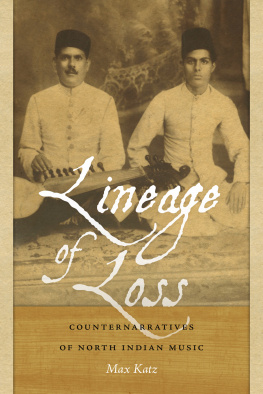

![Katz - Zombie Slayer Box Set, Vol. 1 [Books 1-3]](/uploads/posts/book/141697/thumbs/katz-zombie-slayer-box-set-vol-1-books-1-3.jpg)
